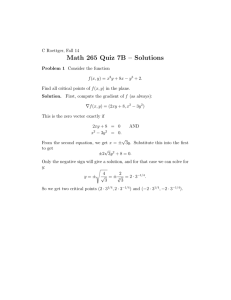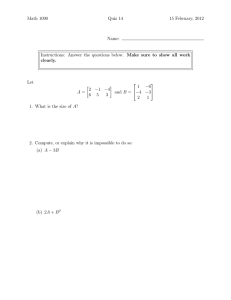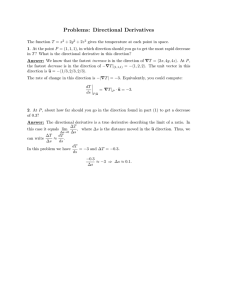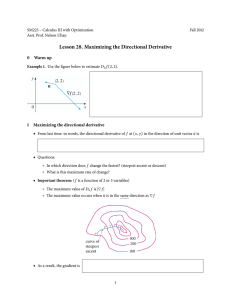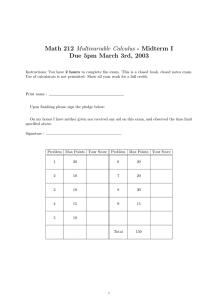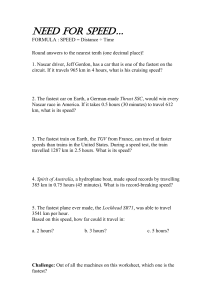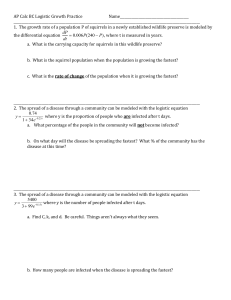Quiz 7 solutions
advertisement
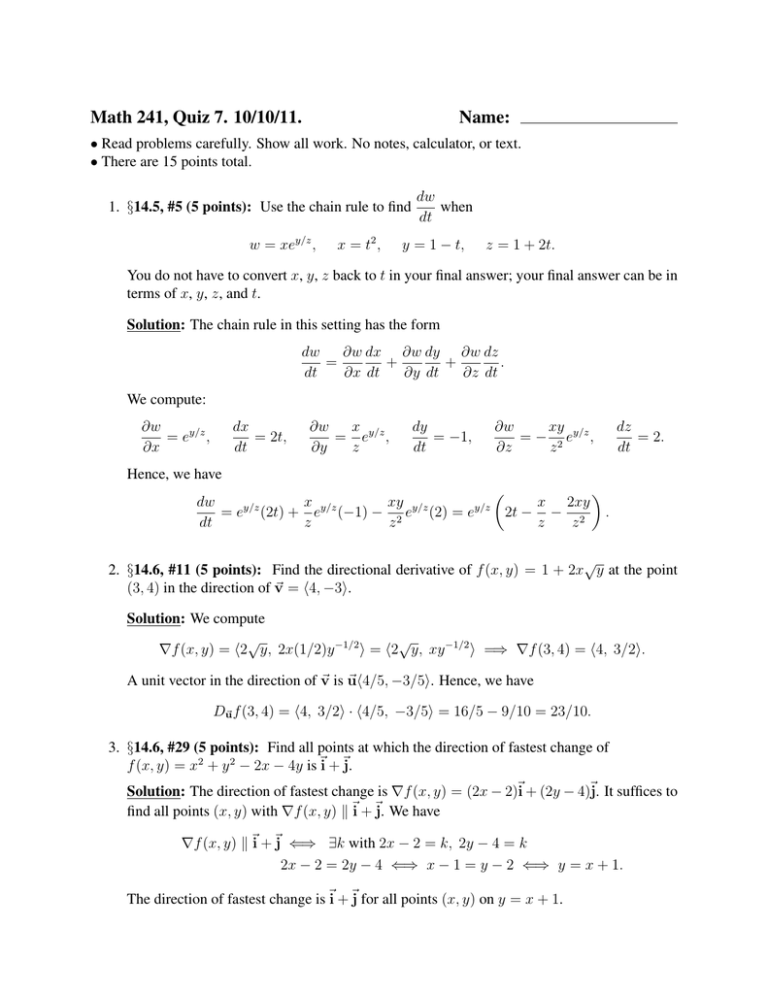
Math 241, Quiz 7. 10/10/11. Name: • Read problems carefully. Show all work. No notes, calculator, or text. • There are 15 points total. 1. §14.5, #5 (5 points): Use the chain rule to find w = xey/z , x = t2 , dw when dt y = 1 − t, z = 1 + 2t. You do not have to convert x, y, z back to t in your final answer; your final answer can be in terms of x, y, z, and t. Solution: The chain rule in this setting has the form ∂w dx ∂w dy ∂w dz dw = + + . dt ∂x dt ∂y dt ∂z dt We compute: ∂w = ey/z , ∂x dx = 2t, dt ∂w x = ey/z , ∂y z dy = −1, dt ∂w xy = − 2 ey/z , ∂z z dz = 2. dt Hence, we have dw x y/z xy y/z x 2xy y/z y/z = e (2t) + e (−1) − 2 e (2) = e 2t − − 2 . dt z z z z √ 2. §14.6, #11 (5 points): Find the directional derivative of f (x, y) = 1 + 2x y at the point (3, 4) in the direction of ~v = h4, −3i. Solution: We compute √ √ ∇f (x, y) = h2 y, 2x(1/2)y −1/2 i = h2 y, xy −1/2 i =⇒ ∇f (3, 4) = h4, 3/2i. A unit vector in the direction of ~v is ~uh4/5, −3/5i. Hence, we have D~u f (3, 4) = h4, 3/2i · h4/5, −3/5i = 16/5 − 9/10 = 23/10. 3. §14.6, #29 (5 points): Find all points at which the direction of fastest change of f (x, y) = x2 + y 2 − 2x − 4y is ~i + ~j. Solution: The direction of fastest change is ∇f (x, y) = (2x − 2)~i + (2y − 4)~j. It suffices to find all points (x, y) with ∇f (x, y) k ~i + ~j. We have ∇f (x, y) k ~i + ~j ⇐⇒ ∃k with 2x − 2 = k, 2y − 4 = k 2x − 2 = 2y − 4 ⇐⇒ x − 1 = y − 2 ⇐⇒ y = x + 1. The direction of fastest change is ~i + ~j for all points (x, y) on y = x + 1.


